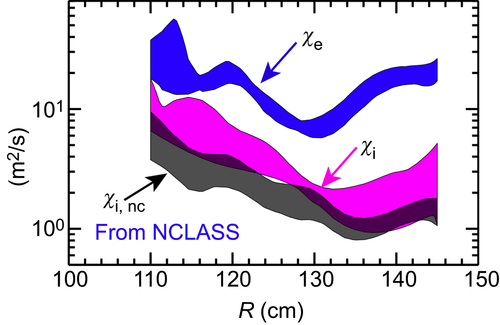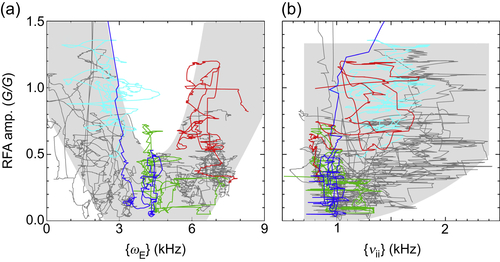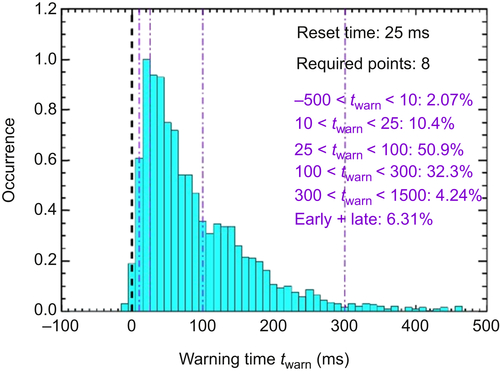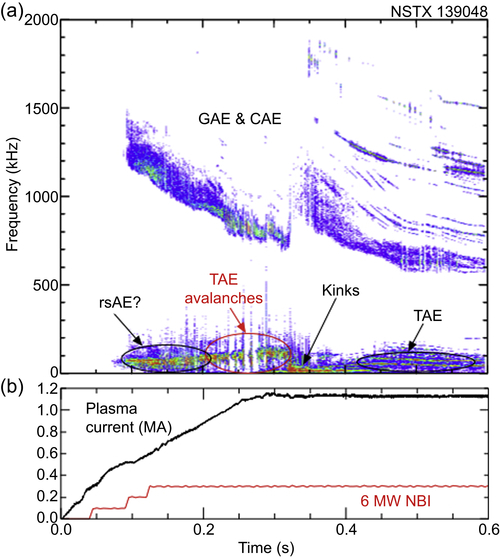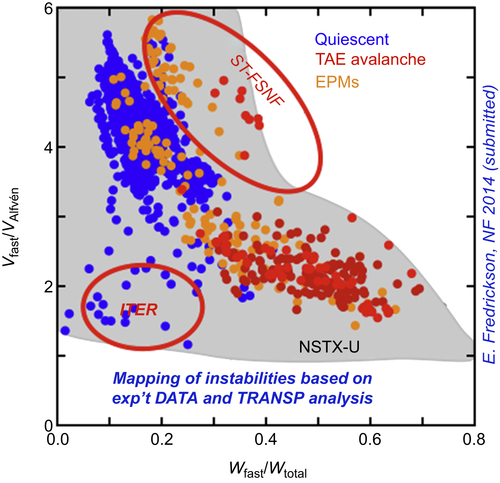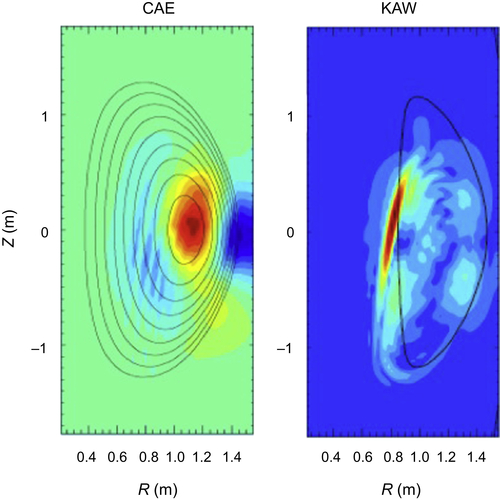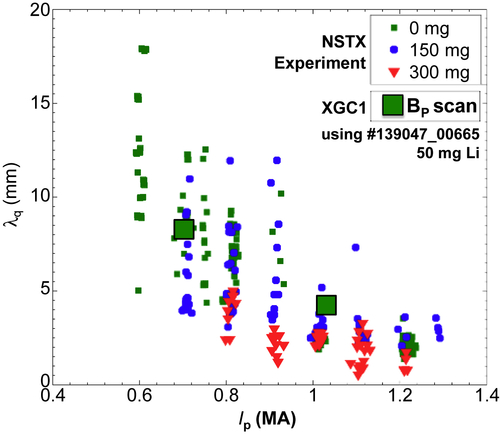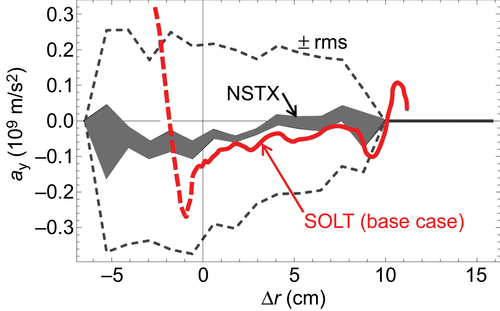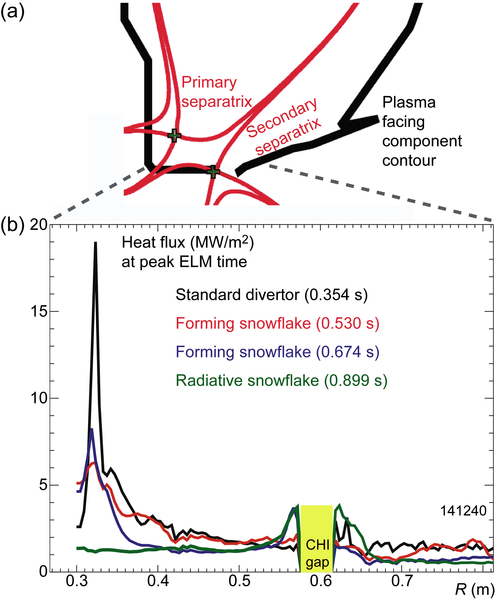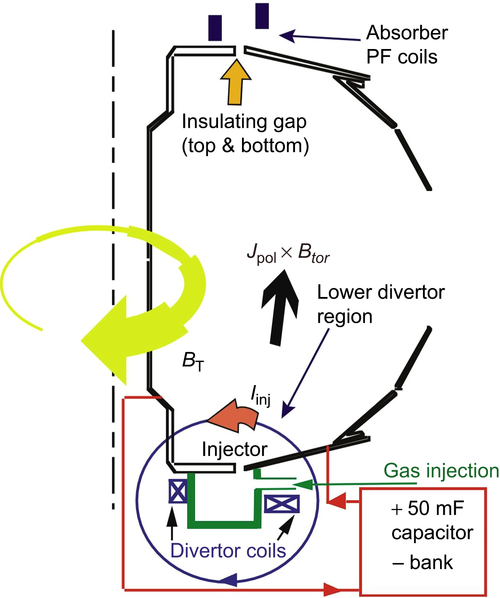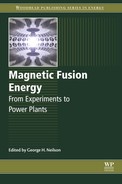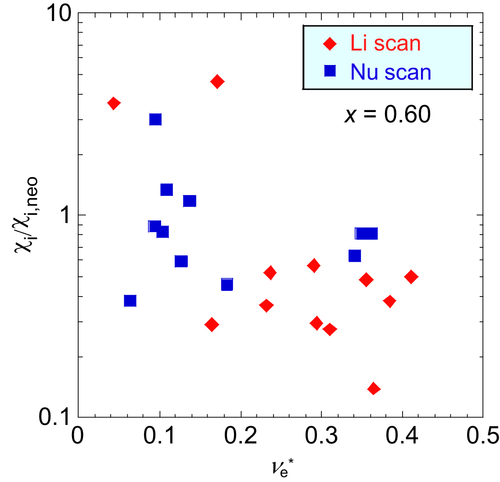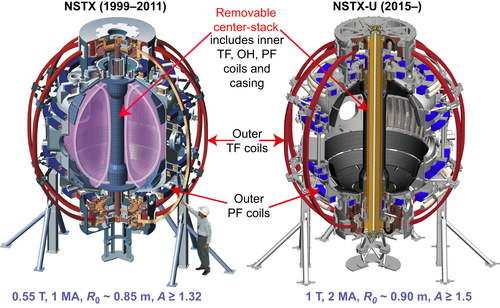[1] Wilson H.R, et al. Nucl. Fusion. 2004;44:917.
[2] Menard J.E, et al. Nucl. Fusion. 2011;51:103014.
[3] Kaye S.M, et al. Fusion Tech. 1999;36:16.
[4] Ono M, et al. Nucl. Fusion. 2001;41:1435.
[5] Jarboe T.R. Fusion Tech. 1989;15:7.
[6] Raman R, et al. Phys. Rev. Lett. 2006;97:175002.
[7] Ryutov D, et al. Phys. Plasmas. 2007;14:064502.
[8] Kugel H.W, et al. Phys. Plasmas. 2008;15:056118.
[9] Kugel H.W, et al. Fus. Eng. Des. 2012;87:1724.
[10] Synakowski E.J, et al. Nucl. Fusion. 2003;43:1653.
[11] Kaye S.M, et al. Nucl. Fusion. 2005;45:S168.
[12] Menard J.E, et al. Nucl. Fusion. 2007;47:S645.
[13] Gates D.A, et al. Nucl. Fusion. 2009;49:104016.
[14] Raman R, et al. Nucl. Fusion. 2011;51:094011.
[15] Sabbagh S.A, et al. Nucl. Fusion. 2013;53:104007.
[16] Kaye S.M, et al. Nucl. Fusion. 2015;55:104002.
[17] Ono M, Kaita R. Phys. Plasmas. 2015;22:040501.
[18] Menard J.E, et al. Nucl. Fusion. 2012;52:083015.
[19] Rewoldt G, et al. Phys. Plasmas. 1996;3:1667.
[20] Maingi R, et al. Nucl. Fusion. 2010;50:064010.
[21] Kaye S.M, et al. Nucl. Fusion. 2011;51:113019.
[22] Bush C.E, et al. Phys. Plasmas. 2003;10:1755.
[23] Chang C.S, et al. Phys. Plasmas. 2004;11:2649.
[24] Kaye S.M, et al. Nucl. Fusion. 2006;46:848.
[25] Kaye S.M, et al. Phys. Rev. Lett. 2007;98:175002.
[26] Kaye S.M, et al. Nucl. Fusion. 2007;47:499.
[27] ITER Physics Basis. Nucl. Fusion. 1999;39:2137.
[28] Kaye S.M, et al. Nucl. Fusion. 2013;53:063005.
[29] Wong K.L, et al. Phys. Plasmas. 2008;15:056108.
[30] Guttenfelder W.G, et al. Phys. Plasmas. 2012;19:022506.
[31] Candy J, Waltz R. J. Comput. Phys. 2003;186:545.
[32] Guttenfelder W.G, et al. Phys. Plasmas. 2012;19:056119.
[33] Guttenfelder W.G, et al. Nucl. Fusion. 2013;53:093022.
[34] Kaye S.M, et al. Phys. Plasmas. 2014;21:082510.
[35] Jenko F, et al. Phys. Plamsas. 2001;8:4096.
[36] Mazzucato E, et al. Nucl. Fusion. 2009;49:055001.
[37] Wang W, et al. Phys. Plasmas. 2010;17:075211.
[38] Ethier S, et al. In: IAEA Fusion Energy Conference. 2010 Paper TH/P4-08.
[39] Peterson J.L, et al. Phys. Plasmas. 2012;19:056120.
[40] Yuh H, et al. Phys. Plasmas. 2009;16:056120.
[41] Yuh H, et al. Phys. Rev. Lett. 2011;106:055003.
[42] Ren Y, et al. Phys. Rev. Lett. 2011;106:165005.
[43] Stutman D, et al. Phys. Rev. Lett. 2009;102:115002.
[44] Gorelenkov N.N, et al. Nucl. Fusion. 2010;50:084012.
[45] Belova E, et al. Phys. Rev. Lett. 2015;114:015001.
[46] Lao L.L, et al. Nucl. Fusion. 1985;25:1611.
[47] Sabbagh S.A, et al. Nucl. Fusion. 2001;41:1601.
[48] Hawryluk R.J. An empirical approach to tokamak transport in physics of plasmas close to thermonuclear conditions. In: Proceedings Course (Varenna 1979). vol. 1. 1980:19.
[49] Goldston R.J. J. Comput. Phys. 1981;43:61.
[50] Park J.-K, et al. Phys. Plasmas. 2011;14:052110.
[51] La Haye R.J, et al. Phys. Plasmas. 2012;19:062506.
[52] Bondeson A, Chu M.S. Phys. Plasmas. 1996;3:3013.
[53] Berkery J.W, et al. Phys. Plasmas. 2010;17:082504.
[54] Berkery J.W, et al. Phys. Plasmas. 2014;21:056112.
[55] Hu B, Betti R. Phys. Rev. Lett. 2004;93:105002.
[56] Zhu W, et al. Phys. Rev. Lett. 2006;96:225002.
[57] Sun Y, et al. Nucl. Fusion. 2011;51:053015.
[58] Kim K, et al. Nucl. Fusion. 2014;54:073014.
[59] Gerhardt S.P, et al. Nucl. Fusion. 2013;53:043020.
[60] Gerhardt S.P, et al. Nucl. Fusion. 2013;53:063021.
[61] Fredrickson E.D, et al. Phys. Plasmas. 2006;13:056109.
[62] McGuire K, et al. Phys. Rev. Lett. 1983;50:891.
[63] Fredrickson E.D, et al. Nucl. Fusion. 2013;53:013006.
[64] Cheng C.Z. Phys. Rep. 1992;211:1–51.
[65] White R.B, Chance M.S. Phys. Fluids. 1984;27:2455.
[66] Wang F, et al. Phys. Plasmas. 2013;20:072506.
[67] Park W, et al. Phys. Plasmas. 1999;6:1796.
[68] Wang F, et al. Phys. Plasmas. 2013;20:102506.
[69] Belova E, et al. Phys. Plasmas. 2002;10:3240.
[70] Fredrickson E.D, et al. Phys. Rev. Lett. 2001;87:145001.
[71] Bortolon A, et al. Phys. Rev. Lett. 2013;110:265008.
[72] Maingi R, et al. Phys. Rev. Lett. 2010;105:135004.
[73] Gerhardt S.P, et al. Nucl. Fusion. 2014;54:083021.
[74] Maingi R, et al. J. Nucl. Mater. 2005;337–339:727.
[75] Snyder P.B, et al. Phys. Plasmas. 2002;9:2037.
[76] Maingi R, et al. Phys. Rev. Lett. 2009;103:075001.
[77] Canik J.M, et al. Phys. Rev. Lett. 2010;104:045001.
[78] Gerhardt S.P, et al. Nucl. Fusion. 2010;50:064015.
[79] Gates D.A, et al. Phys. Plasmas. 2006;13:056122.
[80] Soukhanovskii V.A, et al. Phys. Plasmas. 2012;19:082504.
[81] Eich T, et al. Nucl. Fusion. 2013;53:093031.
[82] Goldston R.J. Nucl. Fusion. 2012;52:013009.
[83] Ku S, et al. Nucl. Fusion. 2009;49:115021.
[84] Ahn J.-W, et al. Nucl. Fusion. 2014;54:122004.
[85] Boyle D.P, et al. Plasma Phys. Cont. Fusion. 2011;53:105011.
[86] Zweben S.J, et al. Phys. Plasmas. 2010;17:102502.
[87] Myra J.R, et al. Nucl. Fusion. 2013;53:073013.
[88] Soukhanovskii V.A, et al. J. Nucl. Mater. 2005;337:475.
[89] Soukhanovskii V.A, et al. Phys. Plasmas. 2009;16:022501.
[90] Soukhanovskii V.A, et al. Nucl. Fusion. 2009;49:095025.
[91] Gray T.K, et al. Nucl. Fusion. 2014;54:023001.
[92] Jaworski M.A, et al. Plasma Phys. Cont. Fusion. 2013;55:124040.
[93] DeTemmerman C.G, et al. J. Vac. Sci. Technol. 2012;A30:041306.
[94] Abrams T, et al. J. Nucl. Mat. 2015;463:1177.
[95] Raman R, et al. Phys. Rev. Lett. 2003;90:075005.
[96] Raman R, et al. Phys. Rev. Lett. 2006;7:175002.
[97] Raman R, et al. Nucl. Fusion. 2011;51:113018.
[98] Jardin S.C, et al. J. Comput. Phys. 1986;66:481.
[99] Jardin S.C, et al. Nucl. Fusion. 1993;33:371.
[100] Nelson B.A, et al. Nucl. Fusion. 2011;51:063008.
[101] Raman R, et al. Nucl. Fusion. 2013;53:073017.
[102] Sovinec C.R, et al. J. Comput. Phys. 2004;195:355.
[103] Hooper E.B, et al. Phys. Plasmas. 2013;20:092510.
[104] Ebrahimi F, et al. Phys. Plasmas. 2013;20:090702.
[105] Ebrahimi F, et al. Phys. Plasmas. 2014;21:056109.
[106] Parker E.N. J. Geophys. Res. 1957;62:509.
[107] Taylor G, et al. Phys. Plasmas. 2010;17:056114.
[108] Hosea J, et al. Phys. Plasmas. 2008;15:056104.
[109] Perkins R.J, et al. Phys. Rev. Lett. 2012;109:045001.
[110] Jaeger R.F, et al. Phys. Plasmas. 2001;8:1573.
[111] Bertelli N, et al. Nucl. Fusion. 2014;54:083004.
[112] Gerhardt S.P, et al. Nucl. Fusion. 2012;52:083020.
[113] Poli F.M, et al. Nucl. Fusion. 2015;55:123011.
[114] Ding S, et al. Plasma Phys. Cont. Fusion. 2010;52:015001.
[115] Rognlien T.D, et al. J. Nucl. Mater. 1992;196:347.
[116] Rognlien T.D, et al. Fus. Eng. Des. 2002;60:497.
[117] Mansfield D, et al. Nucl. Fusion. 2013;53:113023.
[118] Lin Liu Y.R, et al. Phys. Plasmas. 2003;10:4064.
[119] Brambilla M. Plasma Phys. Cont. Fusion. 1999;41:1.


